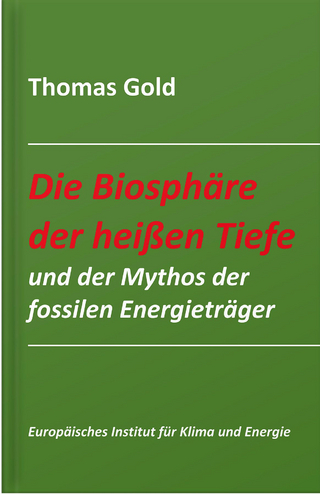
Survival Guide to Organic Chemistry
Crc Press Inc (Verlag)
978-1-4987-7707-0 (ISBN)
Here, the topics covered span the entire standard organic chemistry curriculum. The authors describe subjects which require further explanation, offer alternate viewpoints for understanding and provide hands-on practical problems and solutions to help master the material. This text ultimately allows students to apply key ideas from their general chemistry curriculum to key concepts in organic chemistry.
Key Features:
Reviews key general chemistry concepts and techniques, adapted for application to important organic principles
Provides practical guidance to help students make the notoriously well-known and arduous transition from general chemistry to organic chemistry
Explains organic concepts and reaction mechanisms, generally expanding the focus on how to understand each step from a more intuitive viewpoint
Covers concepts that need further explanation as well as those that summarize and emphasize key ideas or skills necessary in this field. An added bonus is help with organizing principles to make sense of a wide range of similar reactions and mechanisms
Implements a user-friendly process to achieve the end result of problem solving
Covers organic chemistry I and II concepts at the level and depth of a standard ACS organic chemistry curriculum; features practice problems and solutions to help master the material, including an extensive and comprehensive bank of practice exams with solutions
Patrick E. McMahon has for the past twenty three years been teaching both general chemistry and organic chemistry at Benedictine University in Lisle, Illinois. Prior to that, he was a research scientist for Amoco Chemical Company at the Naperville, Illinois campus. McMahon has also taught at several institutions in the Chicago area, including Elmhurst College, Dominican University and Triton Community College. He is a member of the American Legion and served in the United States Army from 1970-1972. His main area of research interest is organic reaction catalysis. Awards that can be accredited to his name include the B.J. Babler award for outstanding contribution to under-graduate instruction at the University of Illinois, the Dean’s Award for Teaching Excellence at Benedictine University and first recipient of the Shining Star award given by the student senate for outstanding contribution to students at Benedictine University. Bohdan B. Khomtchouk is a triple-major summa cum laude (B.Sc. Biochemistry and Molecular Biology, B.Sc. Mathematics and B.Sc. Physics) and is currently United States Department of Defense NDSEG Fellow at the University of Miami Miller School of Medicine. Claes Wahlestedt, MD, PhD, is Leonard M. Miller Professor at the University of Miami Miller School of Medicine and is working on a range of chemistry related translational efforts in his roles as Associate Dean and Center Director for Therapeutic Innovation. The author of some 250 peer reviewed scientific publications with 30,000+ citations, his ongoing research projects concern chemical biology, epigenetics, genomics and drug/biomarker discovery across several therapeutic areas. He has experience not only from academia, but also from leadership positions in the pharmaceutical industry, namely Astra-Zeneca, Pharmacia & Upjohn and Pharmacia Corporation.
Chapter 1: General Concepts for Covalent Bonding and Constructing Lewis Structures for Organic Molecules. Chapter 2: Guideline for Writing Organic Molecule Isomers and Determining Number of Rings Plus Pi-Bonds. Chapter 3: Guideline for Complete Analysis for Central Atoms and Molecules: Bonding/Hybridization/Geometry/Polarity. Chapter 4: Notation in Organic Chemistry: Guide to Writing and Using Condensed Formulas and Line Drawings. Chapter 5: Summary Guidelines for Organic Nomenclature. Chapter 6: Guidelines for Analysis of Intermolecular Forces for Organic Molecules. Chapter 7: Alkane and Cycloalkane Conformations. Chapter 8: Summary Guide to Thermodynamic Concepts for Organic Chemistry. Chapter 9: Guide to Kinetics and Reaction Mechanisms. Chapter 10: Review of Acid/Base Concepts for Organic Chemistry. Chapter 11: Electrophiles and Nucleophiles in Organic Reaction Mechanisms. Chapter 12: Conceptual Guide to Mechanisms in Organic Chemistry. Chapter 13: Guide to Stereochemistry Concepts and Analysis of Reaction Stereochemistry as Applied to Electrophilic Addition. Chapter 14: A Process for Calculation of Product Distribution Through Relative Rate Analysis: Examples for Free Radical Halogenation. Chapter 15: Process to Identify and Solve the Reactions for Organic I. Chapter 16: Electrophilic Addition and Addition/Elimination to Conjugated Double Bond and Aromatic Systems. Chapter 17: Oxidation/Reduction Relationships for Carbonyl Carbon. Chapter 18: A Complete System for Organizing, Identifying, and Solving Carbonyl Reactions: Nucleophilic Addition and Addition/Elimination. Chapter 19: A Brief Guideline for Applying Fundamental Concepts in NMR Spectroscopy. Organic I Practice Exams. Organic II Practice Exams. Multiple Choice Exams.
| Erscheinungsdatum | 15.03.2017 |
|---|---|
| Zusatzinfo | 11 Tables, black and white; 1751 Illustrations, black and white |
| Verlagsort | Bosa Roca |
| Sprache | englisch |
| Maße | 178 x 254 mm |
| Gewicht | 1338 g |
| Themenwelt | Naturwissenschaften ► Biologie ► Biochemie |
| Naturwissenschaften ► Chemie ► Analytische Chemie | |
| Naturwissenschaften ► Chemie ► Organische Chemie | |
| ISBN-10 | 1-4987-7707-4 / 1498777074 |
| ISBN-13 | 978-1-4987-7707-0 / 9781498777070 |
| Zustand | Neuware |
| Haben Sie eine Frage zum Produkt? |
aus dem Bereich


